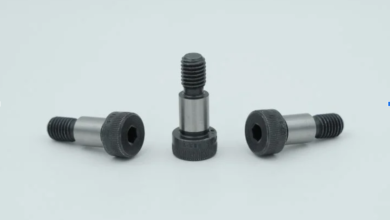self loading concrete mixer: A Smart Investment for Faster, Smarter Concrete Projects

In the world of construction, one thing is constant: the demand for better, faster, and more efficient methods. Traditional concrete batching techniques—though reliable—are gradually being replaced by more adaptive, cost-effective solutions. One such innovation that’s making waves on sites around the globe is the self loading concrete mixer.
Compact, versatile, and remarkably self-sufficient, the self loading concrete mixer has proven itself as a valuable asset for contractors, engineers, and developers looking to streamline their operations without compromising quality.
Let’s explore what makes this machinery stand out, how it works, and why it’s becoming a standard tool in modern construction.
What is a self loading concrete mixer?
A self loading concrete mixer is an advanced piece of mobile construction equipment that performs the complete cycle of concrete production—loading, mixing, transporting, and pouring—without the need for separate machinery. It consists of a hydraulically operated loading bucket, a rotating mixing drum, an operator cabin, and a water dosing system, all mounted on a mobile platform.
Essentially, it is a self-sufficient concrete batching plant on wheels, capable of working in challenging environments, whether it’s a dense urban project or a remote construction site with limited access.
See also: Top 3 Fantastic Travel Attractions in Xiamen
The Evolution of Concrete Equipment
Traditional concrete operations often involve three or more components: a loading vehicle (like a loader or backhoe), a concrete mixing machine or batching plant, and a truck or pump to transport and pour the mix. This setup not only increases labor and costs but also leads to delays when coordination fails.
The introduction of the Self Loading Concrete Mixer has simplified this entire process by integrating all of these steps into a single, operator-friendly unit.
Inside the Machine: How it Works
Here’s how a self loading concrete mixer handles a full concrete production cycle:
- Material Loading
The machine’s hydraulic bucket scoops up cement, sand, and aggregates from the ground and loads them directly into the drum. - Water Addition
A pre-measured quantity of water from the onboard tank is added through a dosing system to ensure a consistent mix.
Key Features of the self loading concrete mixer
Here’s what makes this machine such a game-changer:
- Drum Rotation System: Uniform mixing guaranteed with high-speed rotation.
- Digital Weighing System: Maintains accurate material ratios.
Benefits You Can’t Ignore
✅ Time-Saving
Projects move faster with on-site concrete production. There’s no waiting for delivery trucks or batch plant schedules.
✅ Cost-Effective
Though it requires an initial investment, the self loading concrete mixer quickly pays off by reducing labor, fuel, and material waste.
✅ Labor-Efficient
One trained operator can do the work of a full concrete crew. That means fewer hands, fewer payrolls, and less room for human error.
✅ Higher Quality Control
Producing concrete on-site allows for better supervision, fewer delays, and consistent output—critical for structural integrity.
✅ All-Terrain Access
Whether in remote villages or urban high-rise projects, this mixer delivers. It’s built to go where other machines can’t.
Where It’s Used
Thanks to its flexibility, the self loading concrete mixer is suitable for a wide range of applications:
- Residential construction (foundations, floors, beams)
- Road repair and paving
- Remote infrastructure projects (schools, clinics, water tanks)
- Agricultural infrastructure (storage units, irrigation channels)
- Disaster relief and emergency construction
In regions with little to no access to ready-mix suppliers, this machine is often the only practical solution.
Real-World Example: Building in the Mountains
In Northern Pakistan, a road contractor used a fleet of self loading concrete mixers to build retaining walls and bridges in steep terrain where traditional transit mixers couldn’t operate. The team completed the project two months ahead of schedule, cut operational costs by 30%, and maintained exceptional concrete consistency despite daily temperature variations.
This real-world usage shows that this machine is not just for convenience—it’s essential for certain environments.
Considerations When Buying or Renting
Before choosing a self loading concrete mixer, keep the following in mind:
- Capacity Needs: Machines range from 1.2m³ to 6.5m³. Choose according to your daily concrete volume.
- After-Sales Service: Opt for a brand that offers support, parts, and training.
- Drum Rotation Angle: Greater rotation flexibility allows better placement.
- Fuel Consumption: Compare engines for fuel efficiency.
- Spare Part Availability: Especially critical in remote areas or international operations.
Brands like Daswell, Ajax, Carmix, and Fiori are well-established with global service footprints.
Environmental Advantages
Sustainable construction practices are no longer optional—they’re expected. The self loading concrete mixer supports these values:
- On-demand batching reduces concrete waste.
- Lower emissions from reduced trips and minimal machinery.
- Less water waste due to efficient dosing systems.
- Minimal site disruption thanks to compact design.
For LEED or green-certified projects, this machine offers both performance and eco-compliance.
Final Thoughts
The self loading concrete mixer is a smart investment for companies and contractors seeking productivity, precision, and performance in concrete operations. It bridges the gap between site flexibility and mix consistency, offering a single-machine solution for nearly any concrete challenge.
If your construction goals involve tight deadlines, remote locations, or limited labor, this machine isn’t just a choice—it’s a necessity.




